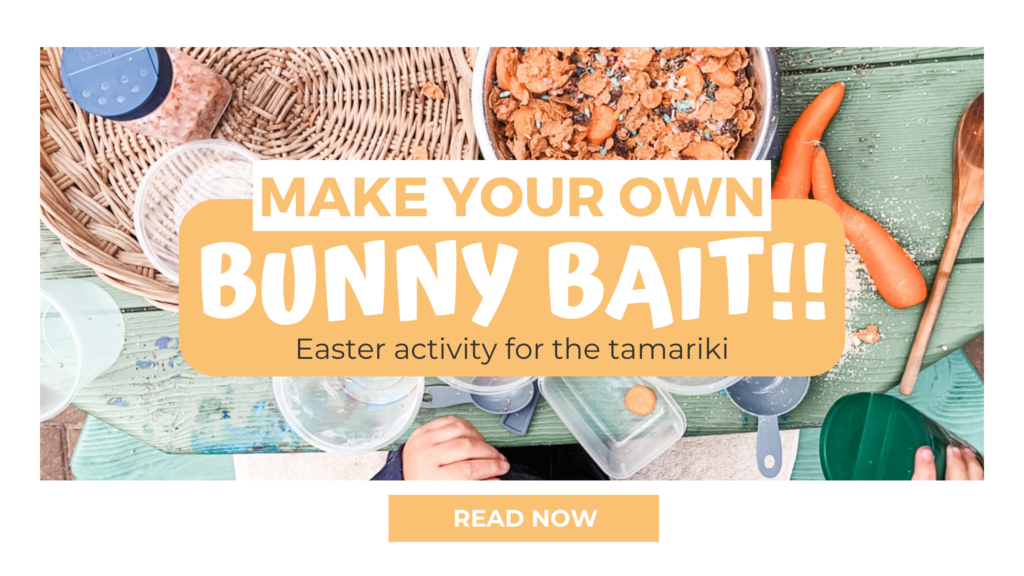Create Some Fun Memories with the Tamariki this Easter Season!

*Ppsstt, quick heads up! Some of the links mentioned here might be affiliate links. This just means that if you decide to buy something through them, we might make a commission. Tēnā koe!*
🐰 This bait is for the Easter Bunny and is not meant for the kids to eat themselves!
I don’t know about you, but I love kids’ activities that keep them entertained long enough for me to enjoy a cup of coffee while it’s still hot. If that’s you too, let me share this fun little tradition we’ve accidentally embraced in our whare over the past few years –
Crafting our own Bunny Bait!
This activity has quickly become one of the most exciting parts of our Easter festivities for the kids. Using a mix of old, forgotten, expired, and never-going-to-get-eaten items that have been gathering dust in the pantry, they concoct their bait designed to entice the Easter Bunny into visiting our backyard and hiding eggs for them to find in the morning Easter Hunt! They might even be at it for long enough for you to enjoy a hot cross bun with that cuppa too!
Brace yourself for the possibility of a little spillage and overflow though with all of that excited mixing – its all part of the fun! We recommend taking this party outside or laying down a protective sheet if you are stuck inside – but we promise their delight will make it worth the sweeping up!
So whanau – join me in transforming ordinary cupboard spoils into magical rabbit enticing ingredients that even the Easter Bunny himself won’t be able to resist!
Tahi: Gather Your Ingredients
The first step to creating our Bunny Bait is to rummage through the pantry looking for dry ingredients that you can happily donate to the cause. For our own sanity, we opt for using only dry ingredients, since adding sauces or wet foods creates a sticky, gloopy and sometimes smelly mess that isn’t really suitable for scattering in the garden or leaving out overnight – but, you do you boo!
When we looked through our cupboards we discovered:
- Pata Kai (cereal – specifically we had cornflakes and rice bubbles)
- Ōti (oats)
- Raihi (rice)
- Reihana (raisins)
- Amiami (herbs)
- and even some old Kāroti (carrots)
All perfect candidates for our magical concoction – but you can use whatever you have rotting away in your kitchen at the time. Some other ideas (and kupu) for Bunny Bait ingredients include:
- Stale Parāoa (bread), ripped up into small pieces
- Bruised Āporo (apple)
- Stale Pihikete Paka (crackers)
- Crushed Tītipi (chips)
- Old Pihikete (biscuits)
- Out of Date Nati (nuts)
- Expired Amiami (herbs)
- Spoiled Namunamua (spices)
Feel free to get creative with your ingredients if your one of those organised guys and you don’t have pantry items to spare. You could incorporate natural elements from the garden like:
- Pātītī (grass)
- Rākau (sticks)
- Puāwai (flowers)
- Oneone (dirt)
- Kākano (seeds)
or whatever else you can find in and around your whare for them to feed to their floppy eared friend. You don’t need anything fancy because we’re going to add a touch of magic to our ingredients next!
Rua: Add A Touch of Magic!
To add an extra touch of whimsy, we used different food colouring on the rice and cereal to try and make it more vibrant and appealing. You could also add sprinkles, coloured salt or sugar, or hole-punched paper (eco-friendly alternatives to glitter) for some added sparkle.
Prepare your ingredients and set up bowls or containers to neatly display them for the tamariki so they can see what they are working with and make sure to set up your Bunny Baiting Station in a safe space where the kids can comfortably create a little mess.
They will each need a mixing bowl to prepare their bait and some spoons or tongs to add ingredients to their bowls. You might also want to make sure they have an old shirt or an art smock on depending on how much you’re kids love messy play.
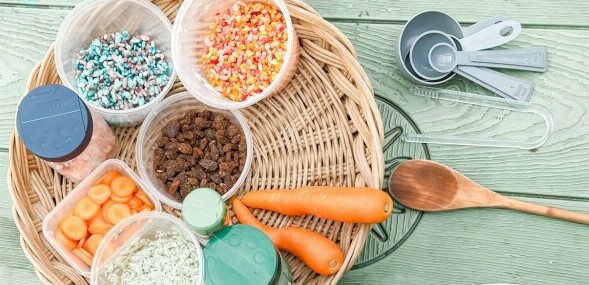
Toru: Eat your Hot Cross Bun!
You’re job is done and it’s time for the Tamariki to take over, so now all that’s left for you to do is warm up that hot cross bun, slather it with pata (butter) and watch the kids have at it!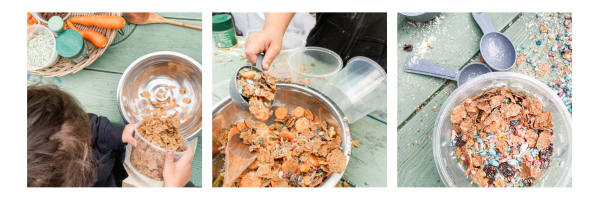 In between bites, you can enhance the learning experience by encouraging the tamariki to mix and match different ingredients to make their very own unique bunny bait or practice their colour kupu by talking about the colours of each ingredient in Te Reo Māori.
In between bites, you can enhance the learning experience by encouraging the tamariki to mix and match different ingredients to make their very own unique bunny bait or practice their colour kupu by talking about the colours of each ingredient in Te Reo Māori.
These kinds of activities promote imaginative play and fine motor skills in our little ones as they scoop and mix the various ingredients, as well as fill their kete of kupu by throwing in some new and known Māori words for them too.
You can even practice your number kupu by counting each spoonful in Te Reo Māori. Check out our Ngā Tau – Kids Numbers Poster in Māori for numbers 0-10 to get you started if you need:

If you’re lucky, the kids will happily play for an hour, giving you a guilt-free break after all your hard work cleaning the pantry. So – sit back, snap some cute pics for the gram (tag us @moathanwords if you do, so we can see your creations), and savor the joy of creating some fun Easter memories with your tamariki.
Whā: Baiting the Bunny!
Now that their creations are complete – its time to bait this bunny! You can choose to scatter it around the garden to entice the Easter Bunny into leaving Easter Eggs behind as he chows down on his ‘delicious’ snack OR you can leave it out in a bowl for him to find, like you do with the cookies and milk for Santa at Kirihimete (Christmas).
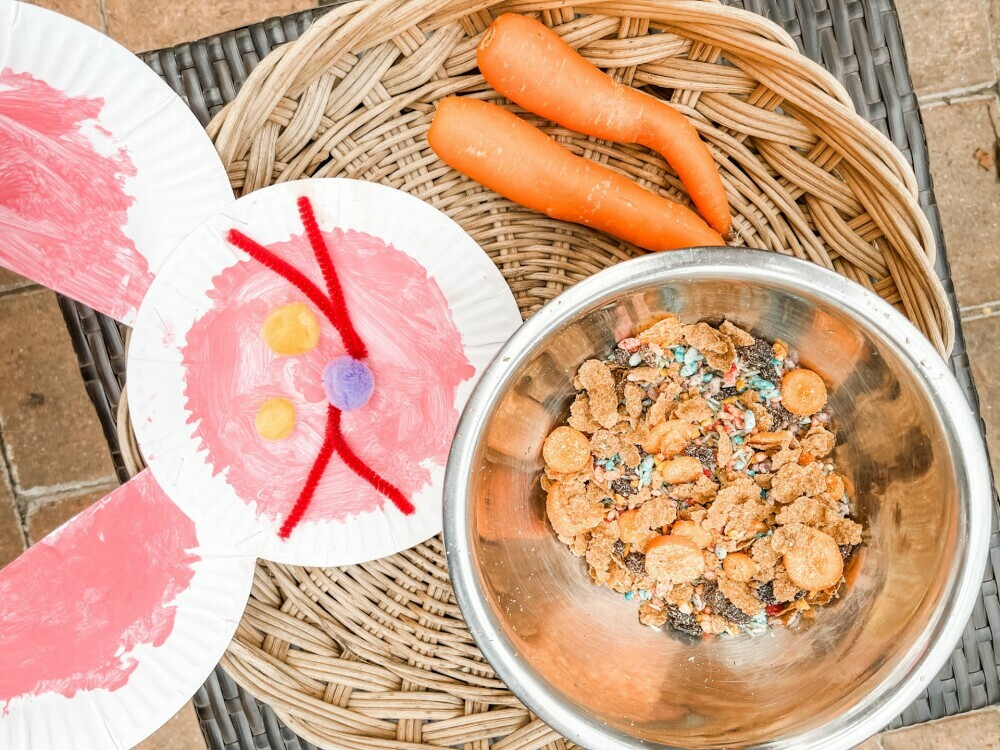
Mr 3 over here was worried that the Easter Bunny wouldn’t find his bait scattered around the garden and wanted to put it in an obvious place where he would defiantly see it, so we set up a little spot on the patio for him to leave it with some extra Kāroti (carrots) and a special card he’d made at Kura (school).
If you’d also like to include a note, here are some cute Bunny Bait poems we found plastered all over the internet that you could use as well:
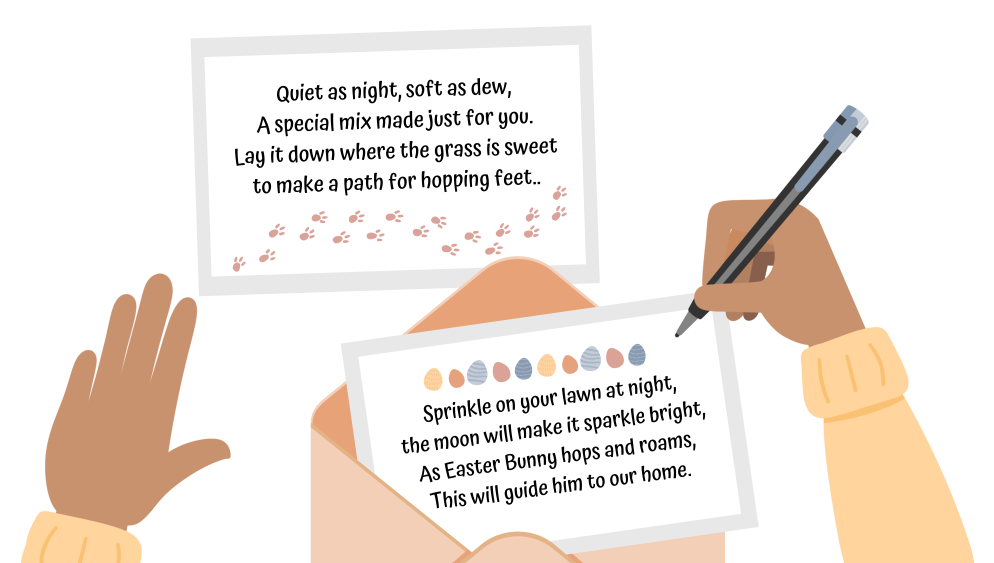
TLDR; To Long, Didn’t Read…
Let’s recap real quick on how to make your very own Easter Bunny Bait this Easter:
Step 1) Gather all of the old, stale, expired and never going to be eaten items from the kitchen that you can happily donate to the activity.
Step 2) Add an extra touch of whimsy to your ingredients using food colouring, or eco-friendly alternatives to glitter such as hole punched paper, coloured salt or sugar or sprinkles left over from the last batch of cupcakes.
Step 3) Let the kids have at it! It’s their time to shine and mix up a unique concoction to lure the Easter Bunny with. You can help promote further learning by:
- Encouraging them to mix and match ingredients to foster creativity.
- Help them practice actions like scooping, grabbing with tongs, pouring and mixing.
- Count the scoops going in the bowl to work on their number kupu: Tahi, Rua, Toru and Whā.
- Kōrero about the different colours they can see in their bowls in Te Reo Māori to practice their colour kupu.
Step 4) Bait the Bunny by either letting the tamariki scatter it around the garden OR by leaving it out in a bowl like you would do with the milk and cookies for Hana Koko at Kirihimete time.
And – There You Have It Whānau!
I really hope that you have as much fun watching the kids making Easter Bunny Bait as we do. It’s a great way to get creative with the tamariki, declutter the kitchen and make Easter a holiday full of fun and laughter. If you enjoyed reading this, why not sign up for our newsletter below so you can be notified when we post next!

